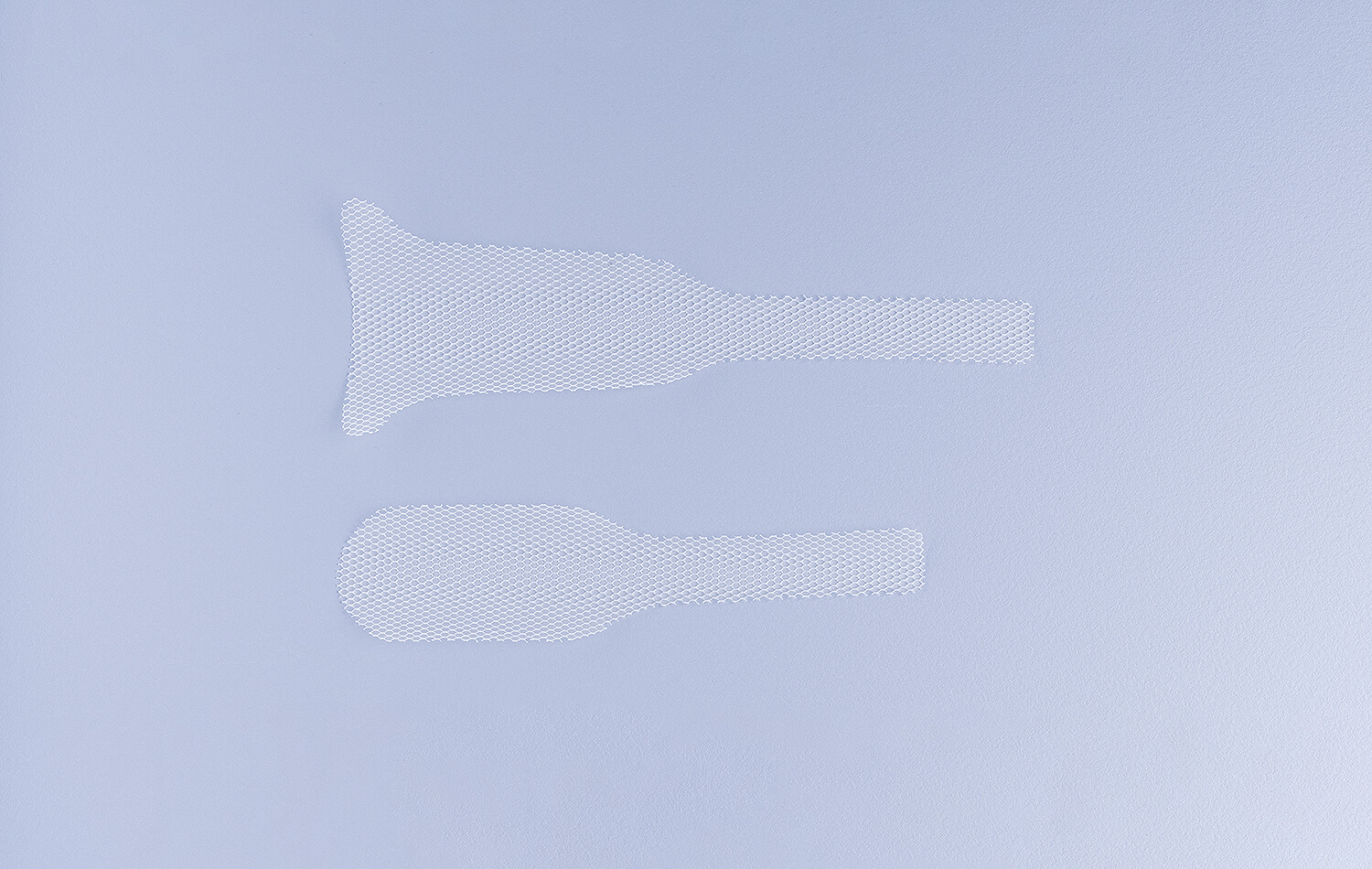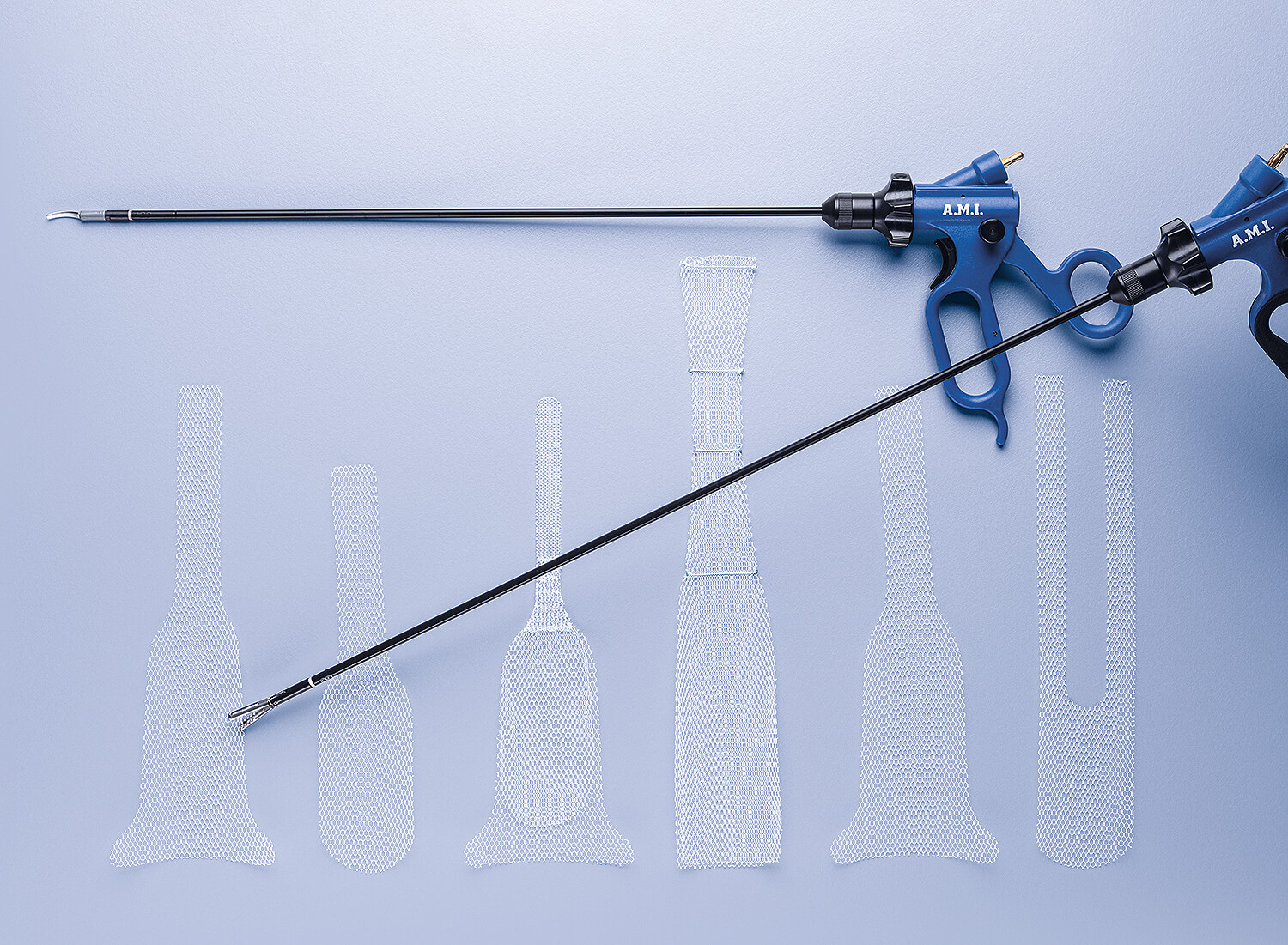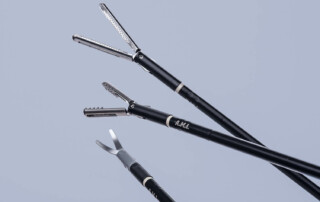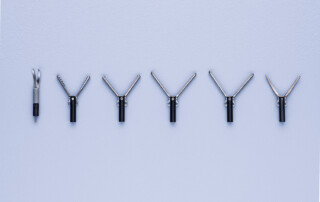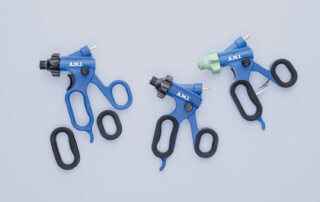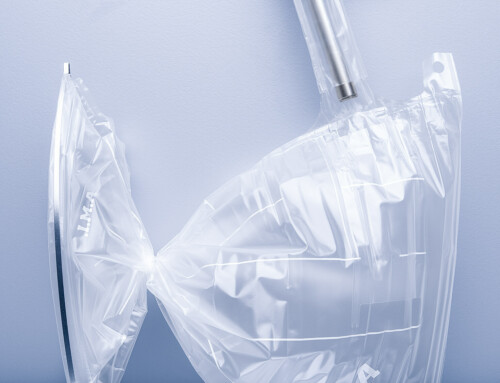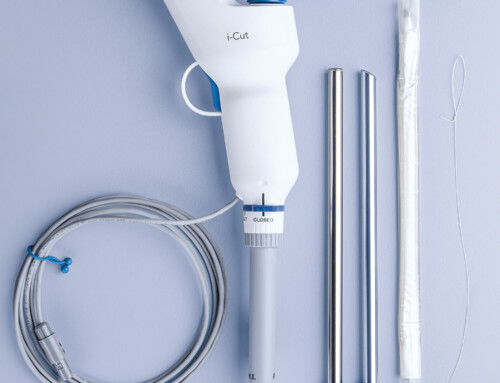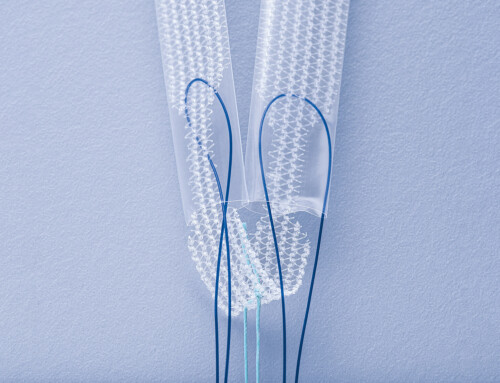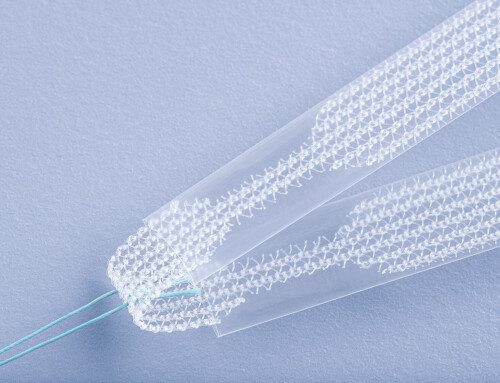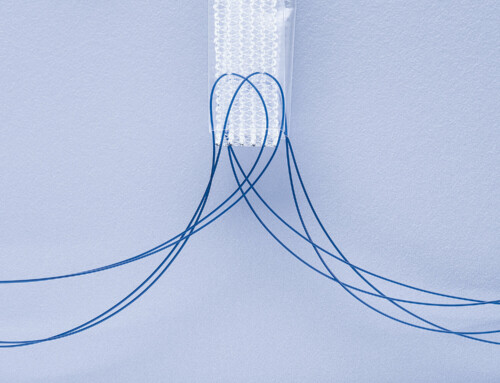Laparoscopic mesh procedure
PelviGYNious
PelviGYNious consists of two, differently shaped meshes with a hexagonal structure. An anterior mesh placed between vagina and bladder to prevent from recurrent cystocele, and a wider, posterior mesh between vagina and rectum to prevent from recurrent rectocele. Both meshes have an apical component for Level 1 suspension to prevent vaginal prolapse.
Indication
Symptomatic POP with or without urinary incontinence:
- Cervical prolapse
- Vaginal vault prolapse
- Cystocele
- Rectocele
Facts
- Applicable for the well-established procedure sacrocolpopexy and sacrocervicopexy
- Apical fixation to correct POP
- Two differently shaped meshes (anterior and posterior) – proximal ends of both are fixed at level of sacral promontory to the longitudinal ligament
Benefits 1
- PelviGYNious can successfully cure patients with pelvic organ prolapse
- Low rates of erosion in a 3-month follow-up period (<3%)
- Low rates of severe post-operative pain in a 3-month follow-up period (<3%)
Unique – The A.M.I. HexaPro mesh
What makes the A.M.I. HexaPro mesh material unique:
- Ultra-lightweight mesh material 21 g/m2
- Hexagonal structure for isoelasticity
- Wide-pore structure ≥ 1,9 mm
- Macroporous
- 93% Porosity
- Extra-large interstitial micropores: 100-150 μm
- Monofilament polypropylene
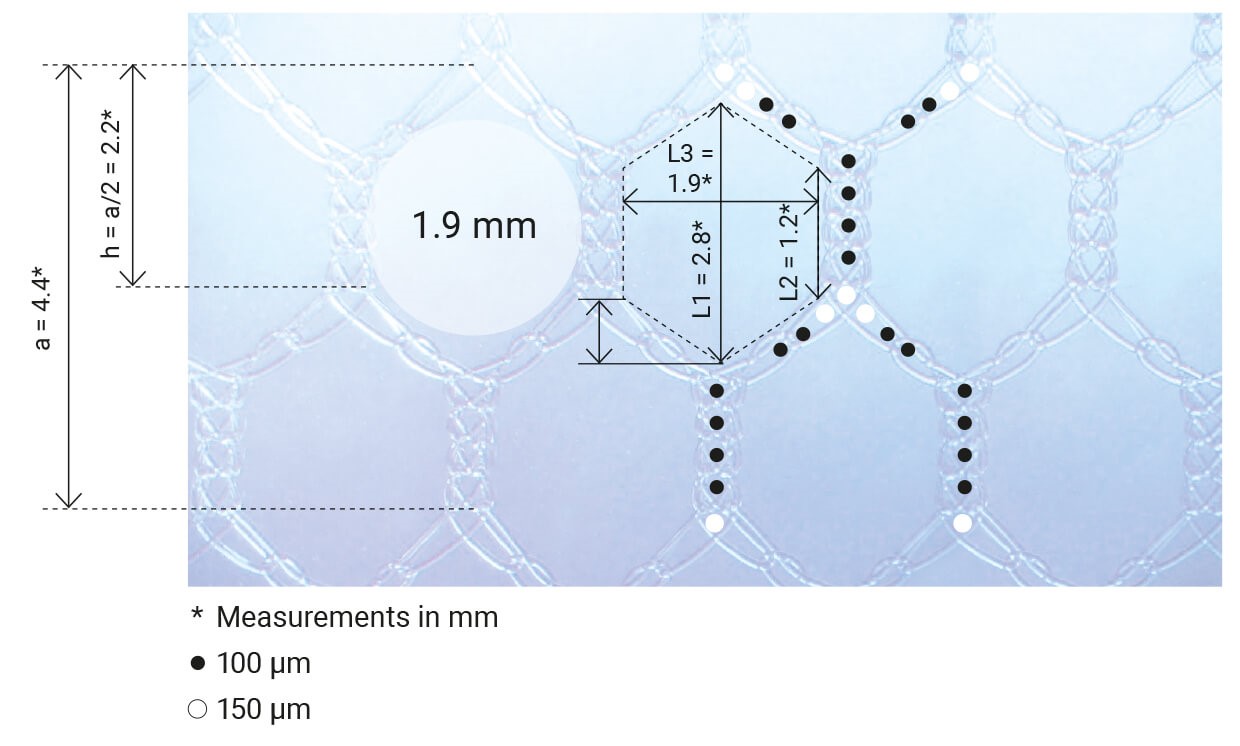
+ EasyInstruments
- Instrument shafts of two different diameters (3 mm and 5 mm) and various lengths
- Reusable shaft and handpiece with additional ratchet function or finger-operated HF-function possible
- Various tips for cutting, grasping, dissecting and holding tissue are completely combinable
Surgery video
References
1 Christmann-Schmid et al. (2018)
Laparoscopic sacrocolpopexy with or without midurethral sling insertion: Is a two-step approach justified? A prospective studyInGYNious single-incision advanced pelvic floor repair with hexapro-mesh



